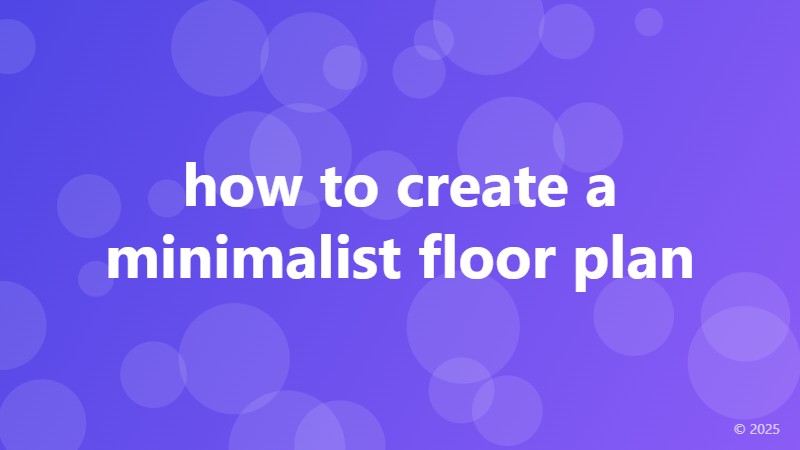how to create a minimalist floor plan

Embracing Simplicity: The Art of Creating a Minimalist Floor Plan
When it comes to designing a living or working space, many of us are tempted to go big – big furniture, big decor, and a big footprint. But what if we told you that sometimes, less is more? A minimalist floor plan can be a breath of fresh air, providing a sense of calm, clarity, and freedom from clutter. In this article, we'll explore the benefits of minimalist design and provide practical tips on how to create a minimalist floor plan that's both beautiful and functional.
Why Minimalist?
So, why should you consider a minimalist floor plan? For starters, a clutter-free space can have a profound impact on your mental and emotional well-being. Research has shown that cluttered environments can contribute to increased stress levels, anxiety, and even depression. By stripping away unnecessary elements, you can create a space that promotes relaxation, focus, and creativity.
Minimalist design also offers a range of practical benefits. With fewer pieces of furniture and decor, you'll have less to clean, maintain, and replace. This can save you time, money, and energy in the long run. Plus, a minimalist space can be more versatile, allowing you to adapt to changing needs and tastes with ease.
Designing Your Minimalist Floor Plan
So, how do you create a minimalist floor plan that's both beautiful and functional? Here are some essential tips to get you started:
Start with a blank slate: Begin by clearing out your space completely. This will give you a fresh perspective and help you identify the essential elements you need to include in your design.
Identify your must-haves: Make a list of the items you can't live without – a comfortable sofa, a functional desk, or a cozy reading nook. This will help you prioritize your design and ensure that you're including only what's truly necessary.
Choose multi-functional furniture: Opt for pieces that serve multiple purposes, such as a storage ottoman or a desk with built-in shelving. This will help reduce clutter and maximize your space.
Keep it simple: Avoid complex patterns, bold colors, and excessive ornamentation. Instead, opt for clean lines, minimal textures, and a calming color palette.
Don't forget about negative space: Remember that empty space is just as important as filled space. Leave room to breathe, and don't be afraid to create a sense of flow and movement in your design.
Putting it All Together
Creating a minimalist floor plan requires patience, discipline, and a willingness to let go of the unnecessary. By following these simple tips, you can craft a space that's both beautiful and functional – a space that promotes calm, clarity, and creativity.
So, take a deep breath, roll up your sleeves, and get ready to embrace the beauty of simplicity. Your minimalist floor plan awaits!